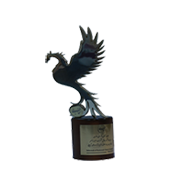
National selection of top producer of
poison and fertilizer
in Iran
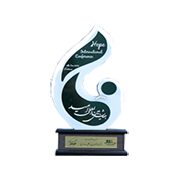
Omid International Conference
International Conferences Center
In Tehran
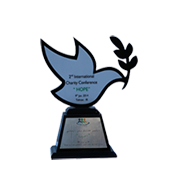
Omid Second International Conference
International Conferences Center
In Iran
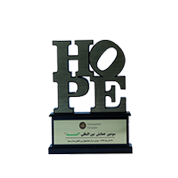
Omid Third International Conference
International Conferences Center
In Iran

Omid Fourth International Exhibition
International Conferences Center
In Tehran

11th International Agricultural Industry
Exhibition
Machinery and related services
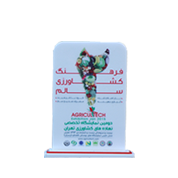
Second Specialized Agricultural Exhibition
The permanent location of
the Bustan fairs

11th International Agricultural Fair
Premier Booth
In Iran
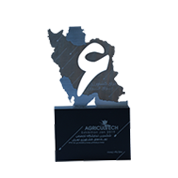
Sixth specialized exhibition
Tehran Agricultural Agencies
In Iran

National Award for Top
Manufacturing Unit
In Iran-gazvin

First place
Safir Cup Tournament
In Winter

Top Team
Ramezan Cup Tournament
TehraniMoghadam

Third place
Safir First Futsal Cup Tournament
itcup

Sustainable agriculture

Agriculture is the concept of ways and means of exploitation of water resources and energy, which has always been based on many economic, social, political and cultural developments throughout the world in order to meet the needs of people's food and shelter throughout history, so that today agricultural and agricultural development It is a driving force behind the development of rural areas in general.
Sustainable agriculture is a kind of farming that is in the interest of mankind, has more efficiency in resource utilization and is in balance with the environment. In other words, sustainable agriculture should be ecologically appropriate, economically justifiable and socially desirable.
The main reason for the emergence of sustainability in agriculture can be found in the history of the implementation of the programs of the Green Revolution and modern agriculture, and the search for it. In the vast majority of areas where green revolution technologies have increased production, environmental and social effects have been reversed, including:
Water pollution through pesticides, nitrates, loss of soil and livestock, damage to wildlife, disruption of ecosystems and health problems in drinking water.
- Contamination of food and animal crops with residues of pesticides, nitrates and antibiotics
- Insecurity to wildlife and natural resources through pesticides, which hurts farmers who are involved in the work of the public and disrupts ecosystems and wildlife.
- Pollution with ammonia, nitrous oxide, methane and burning materials that contribute to reducing ozone and global warming.
- Excessive use of natural resources that causes damage to underground water and to wild ornamental plants and reduces their capacity for absorbing waste materials, as well as preserves watering and increasing salinity.
- The desire to standardize and cultivate agriculture by turning to new seed varieties, which leads to the loss of traditional breeds.
- New health risks for workers in the chemical industry and food industry.
One of the hidden costs of green revolution farmers and fossil fuels is that they need to be used to keep up the level of efficiency, so that they produce 3 to 10 mega jules of energy per kilogram of grain in green revolution conditions, while sustained in agriculture 5 to 0 mega jules are consumed.
Sustainable Agricultural Objectives:
Sustainable agriculture pursues three main environmental objectives, economic-social benefits and economic justice.
Sustainability in agriculture is the result of management in which we must find our needs by considering the ability to produce nature and find the needs for it. Therefore, monitoring human and natural resources is the first goal.
In other words, sustainable agriculture is a set of methods that demonstrate how we can achieve optimal performance by employing minimal inputs and synthetic and chemical factors in such a way that the least harmful impact on the environment is introduced.
It goes without saying that the pollution of the water, pollution of the soil and its deterioration, endangering the life of wildlife and reducing biodiversity, endangering human health and increasing the prevalence of plant pests and environmental problems, economic profitability and justice are among the reasons that have led the world to sustainable agriculture Note.
Moving towards sustainable agriculture occurs when all farmers are confident that they can benefit from all the benefits. With the increasing movement in the agricultural industry over the past two decades, we are confronted with the question of how agriculture plays a role in promoting ways to overcome social problems.
Today, moving towards sustainable agriculture requires ever-increasing support and mobility in its mainstream; sustainable agriculture, in addition to being able to overcome many social problems, has brought about improvements and, in economic terms, opportunities for farmers, workers, Consumers, politicians and other people in the food industry. Relying on the principles of sustainable agriculture can meet our current needs, even without considering the ability of the next generation to provide their needs, but monitoring human and animal resources is very important in this regard.
Human resources monitoring involves taking into account community responsibilities against the workforce, the needs of rural communities, and the health and safety of consumers in the present and future. It should be noted that monitoring the land and natural resources (maintenance, preservation and development of critical resources) should be carried out in a long-term plan. Success in sustainable agriculture requires scientific endeavors, together with research and research, by researchers from diverse fields, farmers, consumers, politicians and others.
obstacles
The development and expansion of sustainable agriculture also has barriers and challenges, including the following:
* Population Growth: Growing population growth has increased demand for food and food, which should be provided through expanding crops or raising production efficiency.
* Poverty: The poor people use resources to survive short-term lives.
* Public property rights and resources (national resources): National resources, including ecosystems, are of great importance. There is no doubt that these exploiters have been threatened because of their negligence, excessive investment, little investment, and even the expropriation of national resources.
* National Policies: National policies can be unsustainable by influencing population growth, poverty, and population crowds on financial resources.
solutions
Although, in order to access sustainable agriculture, the following solutions can be implemented:
1. Decentralization: To achieve agriculture